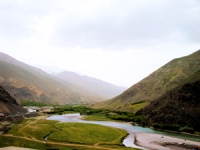Water sharing between Central Asian countries has been conflicting for quite a long time already.
Glaciers and Efficient Water Use in Central Asia
Among their many roles, glaciers serve as important reserves of freshwater. Water in the form of glaciers is particularly valuable because it constitutes a stock that tends to be released in periods when water in other forms is scarcest. These general characteristics of water create complex management problems. In addition, the current retreat of many glaciers alerts us that supplies may be changing in the future. When the inherent qualities of water and of glaciers are superimposed on evolving political and economic circumstances, the potential for conflict is substantially enhanced. Central Asia constitutes just such a case. Here, a political structure in which internal relations were managed by a strong central authority under the Soviet system has become one of international relations among upstream and downstream states, in which other asymmetries also play an important role. Formerly interdependent regions vie as autonomous entities for water for irrigation (under conditions of low precipitation) and for energy production. Currently, tensions are high, but there is no overt conflict. Avoiding future outbreaks of violence among the republics, especially between those upstream, where water resources originate, and downstream, where the level of use is highest, will require complex negotiations among the parties. Achieving agreements will require understanding the fundamental issues of water allocation, forecasting the evolution of glaciers, and balancing the needs and wants of the various populations. The research into these interacting aspects leads to some concrete proposals for solutions for the water management problems in the region.





